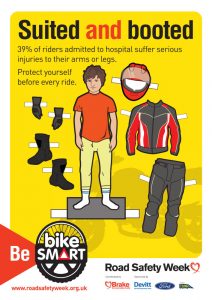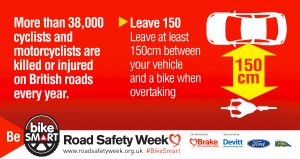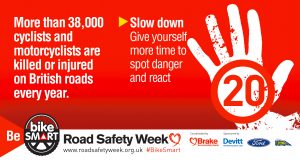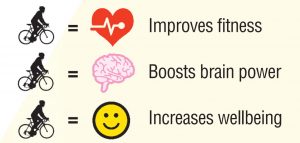KCC Libraries, Registration and Archives consultation
 Libraries, Registration and Archives Draft Strategy 2019-2022
Libraries, Registration and Archives Draft Strategy 2019-2022
Kent County Council
Opened 21 November 2018
Closes 29 January 2019
Introduction
The Libraries, Registration and Archives Service (LRA) run by Kent County Council (KCC) is a highly-valued community service. LRA’s wide range of services are delivered across Kent to anyone who lives, works, studies or visits Kent, and our services support everyone at important stages in their lives.
The communities and customers that LRA serves are changing and will continue to change over time. There are new challenges to face and opportunities to explore. The draft strategy sets out how KCC will continue to provide a sustainable libraries, registration and archives service to meet the needs and choices of their customers and communities.
Have your say
KCC want to hear your feedback on our draft strategy, which includes a proposal to tier libraries and review opening hours. No decision has been taken yet and your views are important in helping us to make a final decision.
The draft strategy is available to download from the ‘Documents’ section below. Please tell KCC your views by completing the online questionnaire via the link under ‘Respond’ below.
In the ‘Documents’ section below you will find the initial Equality Impact Assessments (EqIA) for the draft strategy and library tiering proposal for you to read and comment on via the consultation questionnaire.
Alternative Formats and Hard Copies
Easy Read and Accessible Word versions of the draft strategy and questionnaire are available from the ‘Documents’ section below. To request hard copies of any of the consultation documents, or for any other formats, please email: alternativeformats@kent.gov.uk or call: 03000 421553 (text relay service number: 18001 03000 421553). This number goes to an answering machine, which is monitored during office hours.
Documents
- Libraries, Registration and Archives Strategy Consultation Document
https://consultations.kent.gov.uk/gf2.ti/f/970882/43353349.1/PDF/-/LRA_Strategy_Consultation.pdf - Libraries, Registration and Archives Strategy Consultation Document (Accessible Word Version)
https://consultations.kent.gov.uk/gf2.ti/f/970882/43375653.1/DOCX/-/LRA_Draft_Strategy_Accessible_Word_Version.docx
For use with audio transcription software. This is a large document and may take a couple of minutes to download. - Consultation Document and Questionnaire – Easy Read Version
https://consultations.kent.gov.uk/gf2.ti/f/970882/43354629.1/PDF/-/Consultation_Document__EASY_READ_Version.pdf - Consultation Questionnaire (Accessible Word Version)
https://consultations.kent.gov.uk/gf2.ti/f/970882/43353701.1/DOCX/-/LRA_Strategy_Questionnaire__Accessible.docx
The consultation questionnaire should be completed online via the ‘Respond to this Consultation’ section below. Alternatively complete this Word version and return by post or e-mail. - Equality Impact Assessment – LRA Draft Strategy (PDF Version)
https://consultations.kent.gov.uk/gf2.ti/f/970882/43376005.1/PDF/-/2018_11_01_EqIA_LRA_strategy_v1.0.pdf - Equality Impact Assessment – LRA Draft Strategy
https://consultations.kent.gov.uk/gf2.ti/f/970882/43356037.1/WIZ/-/EqIA_LRA_strategy.doc - Equality Impact Assessment – Library Tiering Proposal (PDF Version)
https://consultations.kent.gov.uk/gf2.ti/f/970882/43376037.1/PDF/-/2018_11_01_EqIA_Library_tiering_v1.0.pdf - Equality Impact Assessment – Library Tiering Proposal
https://consultations.kent.gov.uk/gf2.ti/f/970882/43354789.1/WIZ/-/EqIA_Library_tiering.doc - Frequently Asked Questions (PDF Version)
https://consultations.kent.gov.uk/gf2.ti/f/970882/43394853.1/PDF/-/Public_FAQs_21Nov18.pdf - Frequently Asked Question (Word Version)
https://consultations.kent.gov.uk/gf2.ti/f/970882/43394885.1/DOCX/-/Public_FAQs_21Nov18.docx - How We Developed the Proposed Tiering Model, and the Supporting Data (PDF Version)
https://consultations.kent.gov.uk/gf2.ti/f/970882/43394661.1/PDF/-/Tiers_Data_Analysis_Note_Final.pdf - How We Developed the Proposed Tiering Model, and the Supporting Data (Word Version)
https://consultations.kent.gov.uk/gf2.ti/f/970882/43394597.1/DOCX/-/Tiers_Data_Analysis_Note_Final.docx - Consultation Postcard
https://consultations.kent.gov.uk/gf2.ti/f/970882/43353477.1/PDF/-/LRA_Strategy_Consultation_Postcard.pdf - Consultation Poster
https://consultations.kent.gov.uk/gf2.ti/f/970882/43353637.1/PDF/-/LRA_consultation_Poster.pdf - Full Consultation Privacy Notice
https://consultations.kent.gov.uk/gf2.ti/f/970882/42882597.1/DOCX/-/Consultation_Privacy_Notice__Final_Version__LRA_Strategy.docx
Respond
- Respond by filling in the online questionnaire
https://consultations.kent.gov.uk/consult.ti/LRAStrategy/respondByQuestionnaire
Links
- Sign up for notifications about this consultation
https://consultations.kent.gov.uk/consult.ti/LRAStrategy/joingroup
Details
| Consulting Organisation Type | Kent County Council |
|---|---|
| Consulting Organisation Name | Kent County Council |
| District / Borough areas affected by the consultation | Ashford, Canterbury, Dartford, Dover, Gravesham, Maidstone, Medway, Sevenoaks, Shepway, Swale, Thanet, Tonbridge & Malling, Tunbridge Wells |
| Consultation Topic | General interest, Libraries and archives |
| Consultation Methods | Online survey / questionnaire / forms, Other survey / questionnaire / forms, Community event |
| Contact Details | Email: lraconsultation@kent.gov.uk |


 Your rights can be different when buying from an online marketplace – websites where traders and private individuals list and sell products.
Your rights can be different when buying from an online marketplace – websites where traders and private individuals list and sell products. Age-related TV licence policy consultation
Age-related TV licence policy consultation





